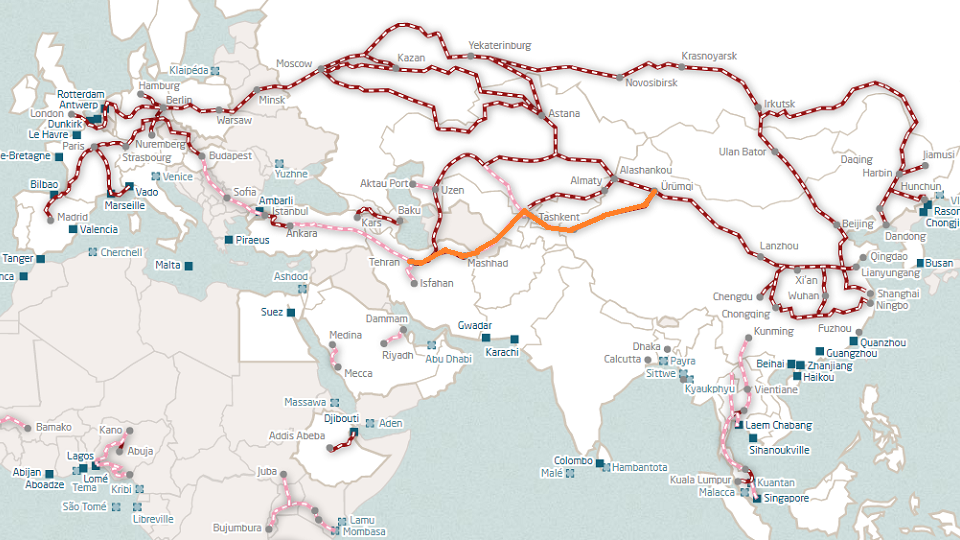Primer:Remember the United States crafted and offered a peace agreement between Israel, Hamas, the Palestinians just a few weeks ago. Reading below, note that ‘united nations’ is hardly what this blacklist encourages.
The UN High Commissioner for Human Rights published on Wednesday a “database” of companies doing business with Israeli settlements. The list includes 112 firms, 94 of them Israeli and the other 18 from six other countries, including the United States.
 Michelle Bachelet
Michelle Bachelet
The database was generated pursuant to Resolution 31/36, adopted by the UN Human Rights Council (UNHRC) on March 24, 2016, which calls upon the UN High Commissioner for Human Rights to produce a “database of all business enterprises” engaged in certain settlement-related activities in “the Occupied Palestinian Territory, including East Jerusalem.”
The database, also referred to as a blacklist, is inconsistent with U.S. law and policy. U.S. law, at 19 U.S.C. 4452(b)(4), states that Congress “opposes politically motivated actions that penalize or otherwise limit commercial relations specifically with Israel, such as boycotts of, divestment from, or sanctions against Israel.”
In addition, compliance with the blacklist could be inconsistent with the U.S. anti-boycott statute (50 U.S.C 4842), which has long been used to punish compliance with boycotts (and blacklists) fostered by the Arab League.
Boycotts spurred by the UNHRC and its blacklist would likely also run afoul of some or all of the two dozen U.S. state laws that require divestment from companies that boycott Israel (in some cases specifically defined to include Israeli settlements).
Compliance with a boycott fostered by the UNHRC and its blacklist may also cause U.S. companies to run afoul of the U.S. Treasury Department’s separate antiboycott regulations. The regulations implement the Ribicoff amendment to the Tax Reform Act of 1976. Internal Revenue Code section 999 requires U.S. taxpayers to report whether they (or corporations they control) have participated in or cooperated with boycotts not sanctioned by the U.S. government. According to the Treasury, U.S. persons who participate in such boycotts “may be subject to penalties that reduce their foreign tax credit, the benefits of foreign sales corporations, and the deferral available to U.S. shareholders of controlled foreign corporations.”
The blacklist also lacks a basis in international law. Indeed, international law does not prohibit business in disputed territories. Nor is doing such business inconsistent with the principles of corporate social responsibility (which are non-binding). That is the official view of the United Nations, expressed in its Global Compact document titled “Guidance on Responsible Business in Conflict-Affected and High-Risk Areas: A Resource for Companies and Investors.”
Finally, the legitimacy of the database is also thrown into doubt by the very makeup of the UNHRC, which includes as members many of the world’s worst human rights violators. Current UNHRC members sitting in judgment of Israel include the Democratic Republic of the Congo, Eritrea, Libya, Pakistan, Sudan, and Venezuela.
There are more than 100 territorial disputes in the world today, including in Crimea, Cyprus, Kashmir, Nagorno-Karabakh, Tibet, and Western Sahara. Yet only the West Bank and East Jerusalem were singled out for such a database. The decision to focus on Israel raises the question of whether the database is really about human rights, or rather about hypocritically bashing Israel.
***
The list identified companies listed in the United States, France, the Netherlands, Luxembourg, Thailand and Britain.
Inclusion on the list had no immediate legal implications for the companies. But the issue is highly sensitive as companies named could be targeted for boycotts or divestment aimed at stepping up international pressure on Israel over its West Bank settlements.
Israeli President Reuven Rivlin expressed solidarity with the named businesses, saying, “Boycotting Israeli companies does not advance the cause of peace and does not build confidence between the sides.”
“We call on our friends around the world to speak out against this shameful initiative which reminds of dark periods in our history,” he added.
Israeli Prime Minister Benjamin Netnayahu said, “Whoever boycotts us will be boycotted. The UN Human Rights Council is a biased body that is devoid of influence. Not for nothing have I already ordered the severing of ties with it. It was also not for nothing that the American administration has taken this step together with us. In recent years, we have promoted laws in most US states, which determine that strong action is to be taken against whoever tries to boycott Israel. Therefore, this body is unimportant. Instead of the organization dealing with human rights, it only tries to disparage Israel. We strongly reject this contemptible effort.”
The head of Israel’s centrist Blue and White party — ex-IDF Chief of Staff Benny Gantz — tweeted, “A dark day for human rights. The UN high commissioner for human rights has lost touch with reality.”
Hillel Neuer — executive director of the Geneva-based UN Watch NGO — tweeted, “The list has no precedent & turns the UN into Ground Zero for the global anti-Israel boycott campaign.” More here.





 Michelle Bachelet
Michelle Bachelet